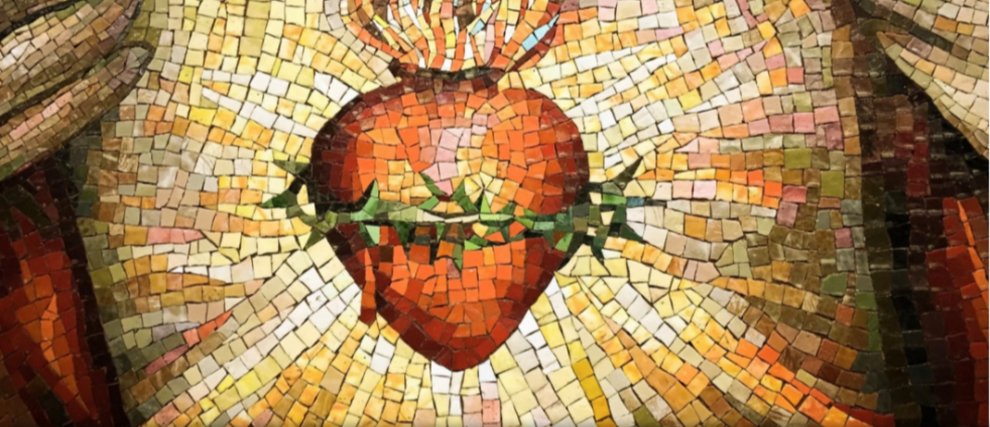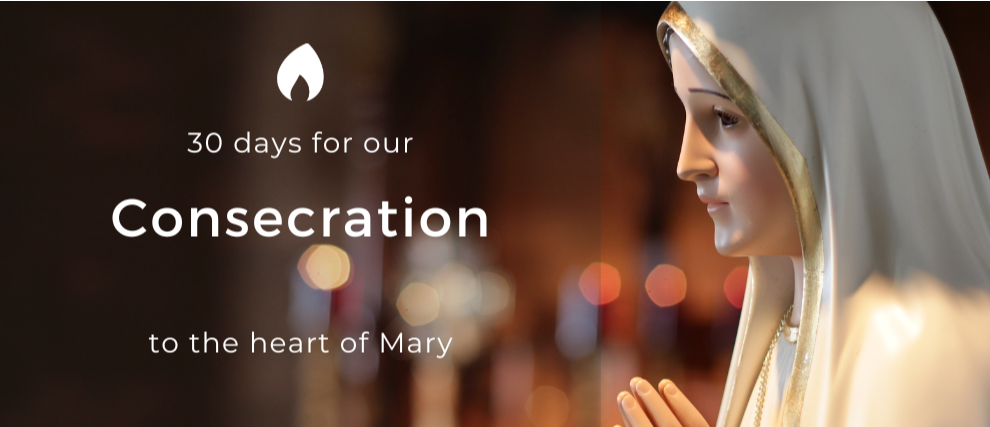Maria Valtorta
Maria Valtorta was born in Caserta on March 14th, 1897. She was the only daughter of Giuseppe Valtorta, a non-commissioned officer, and Iside Fioravanzi, a French teacher. Her mother, bad-tempered and selfish, was very hard on her husband and daughter. Maria grew up traveling around Italy with her father's regiment. She quickly showed her decisiveness, her intellectual abilities, and her spiritual sensitivity. It was at Bianconi College in Monza that Maria finished her studies. She spent four happy years there, and at the end, she felt the desire to turn her life to God.
In 1913, the family moved to Florence, where the girl enjoyed herself. At the beginning of World War I, Maria was a "Samaritan nurse" in the military hospital. During these years, Maria's mother proved to be particularly cruel, twice shattering her daughter's dreams of love. In 1920, Maria's life was changed by a terrible event. An anarchist struck her violently with an iron bar in her kidneys, crippling her. Following this, Maria spent two years with relatives in Reggio Calabria in a relaxing environment. This period led Maria to give her life to Christ again.
In 1924, the Valtorta family settled in Viareggio in Tuscany. In 1925, Maria made an act of offering to merciful Love and began to make continual gestures of love towards Jesus and humanity. The young woman also devoted herself to her parish, especially to the young people of Catholic Action, and gave lectures. His growing sickness made her movements more and more difficult. On January 4, 1933, Maria left her home for the last time and after 1934, she did not leave her bed. In 1935, Marta Diciotti, a young orphan, came to live with the Valtortas. She took care of Maria all her life and became her confidante. That same year, Maria lost her father, whom she loved very much. His death caused her deep sorrow. In 1943, Maria's mother died in turn, having never ceased to torment her daughter, who still loved her out of love for Jesus.
From 1943, Maria received visions of scenes from the Gospel. At Jesus’ request, she wrote everything she saw and heard, filling 122 notebooks totalling 15,000 pages. Most of the revelations were received by Maria before 1947, but they would continue until 1953. Maria was a tertiary of the Order of the Servants of Mary. It was therefore quite naturally a father of the order, Father Romualdo Migliorini, who was her spiritual guide. At the end of her life, Maria retreated to a kind of prostration because of the suffering she endured, especially that of seeing that the will of Jesus concerning the work not fulfilled.
Maria died on October 12th, 1961 in Viareggio. In 1973, her body was brought to the chapel of the Santissima Annunziata in Florence. Her grave reads: Tertiary of the Order of the Servants of Mary, Host accepted by God, Writer of divine things or historian of God.
The cause of beatification of Maria Valtorta is not yet open, although many members of the Church (including popes) have taken a stand in its favor. Since 2019, however, the Church has begun the process of proclaiming Maria Valtorta Venerable.
Discover the lives of other saints and Mystics of the Catholic Church: Marthe Robin, Padre Pio, Saint Faustina, Luisa Piccarreta, etc.
Maria Valtorta’s Writings
Maria's first work is her Autobiography, written at the request of her confessor in less than two months, in 1943, and published after her death.
The Gospel as Revealed to me
In 1943, Maria suddenly received an initial vision and Jesus offered her his mission, which she accepted. From this moment on, the visions of scenes of Jesus’s life would continue and constitute the monumental work of Maria Valtorta. This work, the main one, is the life of Jesus in ten volumes, whose original title was The Poem of the Man-God. The work is today published under the title The Gospel as Revealed to Me. Entirely written under the dictation or following visions of various scenes of the Gospel, this work is inspired by the Holy Spirit and Maria Valtorta is only the penholder of God. The writing lasted four years. Maria wrote day and night, in a single draft and without seeming in any way disturbed by interruptions. She had only the Bible and the Catechism of Pius X at her disposal. The scenes described by Maria follow one another without any logical or chronological order; she writes everything she sees as well as the dictations in school notebooks provided by her confessor. When, afterwards, all the visions were put back in the order desired by Jesus, the whole forms a work of perfect coherence. In particular, Maria received the visions of the scenes corresponding to the mysteries of the rosary, which inspire faith in particular. We find in particular the accounts of: the birth of Mary, the Annunciation, the Nativity of Jesus, the presentation of Jesus in the temple, the death of Saint Joseph, the baptism of Jesus, the wedding of Cana, the Agony in Gethsemane, the Way of the Cross, the Passion of Christ, the Resurrection, etc.
Other visions and dictations
Maria Valtorta received other dictations and visions which have been grouped in various works: The Notebooks (The Notebooks of 1943, 1944 and 1945-1953), The Notebooks, The Lessons on the Epistle of Saint Paul to the Romans, The Book of Azarias, The Comments on the Apocalypse which are included in the Notebooks from 1945 to 1950. The dictations and visions reported in these books concern: historical visions of the life of Jesus, historical visions of the early times of the Church, including those of the martyrs, heavenly visions (of Paradise, of the Trinity), comments concerning our present and our future, prophetic descriptions, teachings for our time, comments of the sacred authors, etc.
Correspondence
Finally, in addition to these inspired writings, we also have Maria Valtorta's correspondence. Her letters are addressed mainly to Monsignor Carinci, who was close to Pope Pius XII and to Mother Teresa Maria, prioress of the Carmelite convent close to Viareggio, who was her spiritual mother.
Maria Valtorta and the Church
The work of Maria Valtorta is not yet recognized by the Church, although it has been read in a personal capacity by three popes: Pius XII, John Paul II and Benedict XVI.
- Pius XII was very supportive of the work from the beginning and always defended it afterwards. Here are his words: “Publish the work as-is. There is no need to give an opinion as to its origin, whether extraordinary or not. Those who read will understand. ” The Holy Office ignored the Pope's opinion and, in 1960, put the work of Maria Valtorta into the Index of Prohibited Books. Six years later, the index was abolished. This was the beginning of a controversy at the Vatican level, which ended with the book being allowed to be printed under certain conditions.
- Saint John Paul II had the Gospel as Revealed to Me on his bedside table, but never spoke about it officially.
- Benedict XVI's position on the work of Maria Valtorta is only known when he was prefect of the congregation for the doctrine of the faith. Cardinal Ratzinger acknowledged in a private letter that this work is free from errors of doctrine or morality.
Although the Church has not yet made a decision on the question, many priests, bishops, religious and religious have expressed their enthusiasm for this exceptional work:
- Father Roschini, founder of the Pontifical University "Marianum", wrote that the mariology that emerges from the works of Maria Valtorta surpasses his own. He is the author of a book entitled The Virgin Mary in the Work of Maria Valtorta.
- Father René Laurentin, a specialist in Marian apparitions in the world, says: “Maria Valtorta emerges and recommends herself in many ways: her life of long suffering, lived in total surrender to God, testifies to her holiness. It in no way departs from the Gospel, contradicts it nowhere, adds no foreign teachings to it and remains in conformity with the spirit of the Gospel. ”
Maria Valtorta and Science
Scientists, experts in various fields: history, geology, botany, archaeology, astronomy, have verified the authenticity of thousands of details specified in the work. Jean-François Lavère identified more than 15,000 specific pieces of information given by the work and verified by science. He is the author of a reference book: The Valtorta enigma. The work of Jean Aulagnier gives a luminous scientific approach to the work of Maria Valtorta. Based on the work of these two expert scientists of the Valtorta case, the Association Marie de Nazareth published the book Maria Valtorta: a gift of God validated by science.
Saints and Maria Valtorta
Mother Teresa of Calcutta was particularly attached to the work of Maria Valtorta, which she took with her in addition to her Bible and breviary.
Padre Pio was also very supportive of Maria Valtorta's work: when a penitent asked his permission to read the book, the father replied: “Not only do I allow you to read it, but I recommend it to you.” The link between Padre Pio and Maria Valtorta is so striking that a book is dedicated to them: Padre Pio and Maria Valtorta by Emilio Pisani.
Blessed Father Gabriele Allegra: “Producing good fruit in an ever-increasing number of readers, I think [The Gospel as Revealed to Me] by Maria Valtorta comes from the spirit of Jesus. ”
Blessed Mother Maria Inès of the Most Blessed Sacrament, the Mexican founder of religious congregations, asked that a copy of The Gospel as Revealed to Me be placed in each of her houses.

